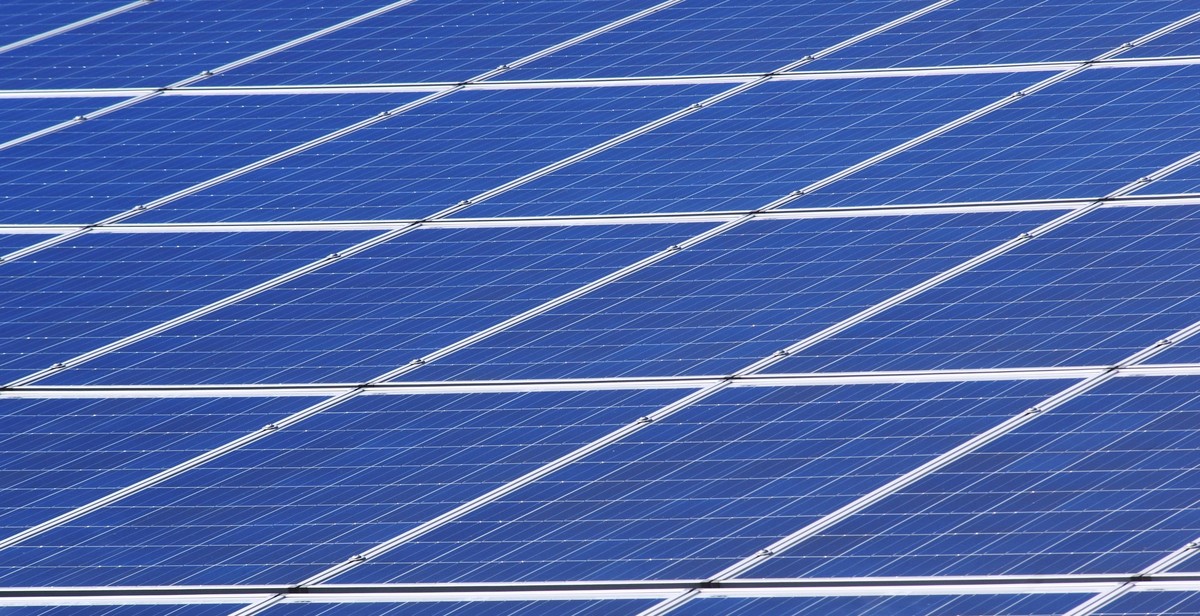Introduction
Mechatronics is an interdisciplinary field that combines mechanical engineering, electronics, control engineering, and computer science to create advanced systems. The field of mechatronics has been growing steadily over the past few decades and has become an integral part of many industries, including manufacturing, transportation, healthcare, and energy.
What is Mechatronics?
Mechatronics is a field that focuses on the design, development, and control of advanced systems. These systems typically involve a combination of mechanical components, electronics, and software that work together to perform complex tasks. Mechatronics experts use their knowledge of mechanics, electronics, and computer science to create innovative solutions that improve efficiency, accuracy, and reliability.
What are Sustainable Energy Systems?
Sustainable energy systems are systems that produce energy from renewable sources and have minimal impact on the environment. These systems are becoming increasingly important as the world looks for ways to reduce its dependence on fossil fuels and mitigate the effects of climate change. Sustainable energy systems include solar, wind, hydro, and geothermal power plants, as well as energy storage systems and smart grids.
In this article, we will explore the applications of mechatronics in sustainable energy systems. We will examine how mechatronics is being used to improve the efficiency and reliability of renewable energy systems, reduce their environmental impact, and increase their overall performance.
Applications of Mechatronics in Sustainable Energy Systems
Sustainable energy systems are becoming increasingly important as the world looks for ways to reduce its reliance on fossil fuels and move towards cleaner, more renewable sources of energy. Mechatronics, the combination of mechanical, electrical, and computer engineering, plays a critical role in the development and implementation of sustainable energy systems. Here are some of the applications of mechatronics in various sustainable energy systems:
Wind Energy
Wind turbines are a common sight in many parts of the world, and mechatronics is essential in their design and operation. Mechatronics engineers develop control systems for wind turbines that optimize their performance, and also design and maintain the mechanical components that convert wind energy into electricity.
Solar Energy
Mechatronics is used in the design and development of solar panels, which convert sunlight into electricity. Mechatronics engineers develop control systems for solar panels that optimize their performance and ensure they are operating at maximum efficiency.
Hydro Energy
Hydroelectric power plants use water to generate electricity, and mechatronics plays a key role in their operation. Mechatronics engineers design and maintain the control systems that regulate the flow of water through the turbines, as well as the mechanical components that convert the energy of the moving water into electricity.
Geothermal Energy
Mechatronics is also used in the development of geothermal energy systems, which harness the heat from the earth’s core to generate electricity. Mechatronics engineers design and maintain the control systems that regulate the flow of steam and water through the turbines, as well as the mechanical components that convert the energy of the steam into electricity.
Biomass Energy
Biomass energy systems use organic matter, such as wood chips or agricultural waste, to generate electricity. Mechatronics engineers design and maintain the control systems that regulate the flow of biomass into the combustion chamber, as well as the mechanical components that convert the energy of the burning biomass into electricity.
| Energy Source | Mechatronics Applications |
|---|---|
| Wind Energy | Control systems for wind turbines, mechanical components |
| Solar Energy | Control systems for solar panels, mechanical components |
| Hydro Energy | Control systems for hydroelectric power plants, mechanical components |
| Geothermal Energy | Control systems for geothermal energy systems, mechanical components |
| Biomass Energy | Control systems for biomass energy systems, mechanical components |

1. Wind Energy
Wind energy is a rapidly growing sector in sustainable energy systems. Mechatronics has played a crucial role in the development of wind turbine control and wind farm control systems.
1.1 Wind Turbine Control
Wind turbine control systems are responsible for ensuring the safe and efficient operation of wind turbines. Mechatronics plays a key role in this by integrating various components such as sensors, actuators, and controllers. These systems are designed to optimize the performance of the wind turbine while ensuring that it operates within safe limits. Mechatronics technology allows for real-time monitoring and control of various parameters such as wind speed, blade pitch, and yaw angle.
1.2 Wind Farm Control
Wind farm control systems are responsible for managing the operation of multiple wind turbines within a wind farm. Mechatronics plays a vital role in this by providing a centralized control system that can monitor and control the performance of each individual turbine. These systems are designed to optimize the overall performance of the wind farm while ensuring that each turbine operates within safe limits. Mechatronics technology allows for real-time monitoring and control of various parameters such as wind speed, power output, and turbine status.
| Advantages | Description |
|---|---|
| Improved Efficiency | Mechatronics technology allows for real-time monitoring and control of wind turbines, resulting in improved efficiency and power output. |
| Enhanced Safety | Mechatronics technology ensures that wind turbines operate within safe limits, reducing the risk of accidents and damage to equipment. |
| Reduced Maintenance Costs | Mechatronics technology allows for predictive maintenance of wind turbines, reducing the need for costly repairs and downtime. |

2. Solar Energy
Solar energy is one of the most abundant and sustainable sources of energy available. Mechatronics has played a crucial role in harnessing this energy through the development of solar panel control and solar tracking systems.
2.1 Solar Panel Control
Solar panel control systems are designed to optimize the efficiency of solar panels by ensuring that they are always operating at their maximum power point. Mechatronics has enabled the development of sophisticated control systems that can track changes in weather conditions and adjust the output of the solar panels accordingly. These systems use sensors and actuators to monitor and adjust the voltage and current of the solar panels, ensuring that they are always operating at peak efficiency.
2.2 Solar Tracking Systems
Solar tracking systems are designed to follow the path of the sun across the sky, maximizing the amount of solar energy that can be captured by the solar panels. Mechatronics has enabled the development of highly accurate and reliable solar tracking systems that can adjust the position of the solar panels in real-time. These systems use sensors and actuators to track the movement of the sun and adjust the position of the solar panels accordingly.
| Advantages | Description |
|---|---|
| Increased Efficiency | Solar tracking systems can increase the efficiency of solar panels by up to 30%. |
| Maximized Energy Production | Solar tracking systems ensure that solar panels are always positioned to capture the maximum amount of sunlight. |
| Improved ROI | The increased efficiency and energy production of solar tracking systems can lead to a higher return on investment for solar energy projects. |
3. Hydro Energy
Hydro energy is one of the most widely used forms of renewable energy. Mechatronics plays a vital role in controlling and optimizing hydroelectric power plants and tidal energy generation systems.
3.1 Hydroelectric Power Plant Control
Hydroelectric power plants generate electricity by converting the kinetic energy of falling water into electrical energy. Mechatronics is used in hydroelectric power plants to control and monitor various components of the system such as turbines, generators, and valves. Mechatronic systems can optimize the performance of hydroelectric power plants by adjusting the flow of water to the turbines, controlling the speed of the generators, and ensuring that the system operates within safe limits.
3.2 Tidal Energy Generation Control
Tidal energy is generated by harnessing the power of ocean tides. Mechatronics is used in tidal energy generation systems to control and monitor the movement of underwater turbines. Mechatronic systems can optimize the performance of tidal energy generation systems by adjusting the angle and speed of the turbines, controlling the flow of water through the system, and ensuring that the system operates within safe limits.
In conclusion, mechatronics plays a crucial role in the control and optimization of sustainable energy systems such as hydroelectric power plants and tidal energy generation systems. By using mechatronic systems, these energy systems can operate more efficiently and safely, contributing to a more sustainable future.

4. Geothermal Energy
Geothermal energy is a renewable energy source that is generated from the earth’s natural heat. It is a clean, reliable, and sustainable source of energy that can be used in various applications. Mechatronics has played a vital role in the development of geothermal energy systems by providing control and monitoring solutions for geothermal power plants.
4.1 Geothermal Power Plant Control
Geothermal power plants use the earth’s natural heat to generate electricity. These power plants require complex control systems to ensure efficient and safe operation. Mechatronics plays a crucial role in the development of these control systems by integrating mechanical, electrical, and computer engineering principles.
Mechatronics experts design and develop control systems that can monitor and optimize the performance of geothermal power plants. These control systems use sensors and actuators to collect data and adjust the operation of the power plant accordingly. Mechatronics also provides solutions for fault detection and diagnosis, which can help prevent costly downtime.
Geothermal power plant control systems are complex and require a high level of expertise. Mechatronics experts work closely with geothermal energy companies to develop customized solutions that meet their specific needs. These solutions can help improve the efficiency and reliability of geothermal power plants, making them a more viable source of renewable energy.

5. Biomass Energy
Biomass energy is a renewable energy source that involves the use of organic matter to generate electricity. It is a sustainable alternative to fossil fuels and has the potential to reduce greenhouse gas emissions. Mechatronics plays a crucial role in the control of biomass power plants.
5.1 Biomass Power Plant Control
The control of biomass power plants involves the integration of mechanical, electrical, and computer systems to optimize the efficiency and reliability of the plant. Mechatronics engineers use advanced control systems to regulate the combustion process, monitor the temperature of the boiler, and control the flow of biomass fuel.
Advanced control systems such as distributed control systems (DCS) and programmable logic controllers (PLC) are used to automate the operation of the power plant. These systems enable real-time monitoring and control of the plant, reducing the risk of human error and improving the overall efficiency of the plant.
Additionally, mechatronics engineers use sensors and actuators to monitor and control the emissions from the power plant. This ensures that the plant complies with environmental regulations and reduces the impact on the surrounding environment.
Biomass energy is a promising source of renewable energy, and mechatronics plays a critical role in the control and optimization of biomass power plants.

Conclusion
From the above discussion, it is evident that mechatronics plays a crucial role in sustainable energy systems. Mechatronics has enabled the development of energy-efficient systems that reduce carbon emissions, conserve natural resources and promote sustainability. The integration of mechatronics in renewable energy systems has led to the development of more efficient and reliable energy systems. Mechatronics has also enabled the development of smart grids that optimize energy distribution, reduce energy wastage and improve energy management.
The application of mechatronics in sustainable energy systems has also led to the development of new technologies such as solar trackers, wind turbines and energy storage systems. These technologies have significantly increased the efficiency of renewable energy systems and have made them more accessible to consumers.
As the world continues to grapple with the challenges of climate change and the need for sustainable energy, the role of mechatronics in energy systems will become even more critical. Mechatronics experts have a crucial role to play in developing and implementing innovative solutions that promote sustainable energy systems.
It is, therefore, essential for governments, businesses, and individuals to invest in mechatronics research and development to promote sustainable energy systems. The future of sustainable energy systems is bright, and mechatronics will undoubtedly play a vital role in shaping the future of energy.
